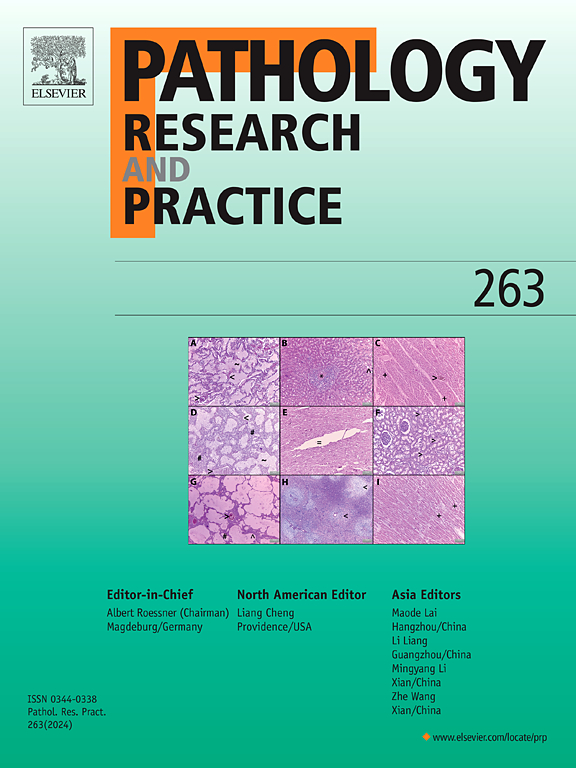siRNA-based knockdown of lncRNAs: A new modality to target tumor progression
IF 2.9
4区 医学
Q2 PATHOLOGY
引用次数: 0
Abstract
This study examines the potential of small interfering RNA (siRNA) as a therapeutic agent for cancer targeting long non-coding RNAs (lncRNAs). The article begins with an analysis of the structure and biogenesis of lncRNA. It explains the diverse functions of lncRNAs in cancer, establishing a foundation for assessing approaches to inhibit these molecules. The analysis focuses on the consequences of lncRNA suppression through siRNA on signaling pathways associated with cancer, connecting theoretical understanding to practical applications. An evaluation of ongoing clinical trials and applications contributes to the discourse by revealing the potential for siRNA-mediated interventions to be practiced. Furthermore, an evaluation of the advantages and disadvantages of this therapeutic approach offers a nuanced viewpoint. In conclusion, the paper synthesizes significant discoveries and outlines potential avenues for future research, contributing to the dialogue surrounding personalized cancer therapeutics and precision medicine. Future challenges in using siRNA to target lncRNAs in oncology include optimizing delivery systems for efficient tumor cell uptake, minimizing off-target effects, enhancing RNA stability for a longer therapeutic window, and overcoming barriers in the tumor microenvironment. Addressing these factors is essential for the practical application of siRNA-based cancer therapies.
基于sirna的lncrna敲低:一种靶向肿瘤进展的新模式。
本研究探讨了小干扰RNA (siRNA)作为靶向长链非编码RNA (lncRNAs)的癌症治疗剂的潜力。本文首先对lncRNA的结构和生物发生进行了分析。它解释了lncrna在癌症中的多种功能,为评估抑制这些分子的方法奠定了基础。分析的重点是通过siRNA抑制lncRNA对与癌症相关的信号通路的影响,将理论理解与实际应用联系起来。对正在进行的临床试验和应用的评估通过揭示sirna介导的干预措施的潜力来促进本文的论述。此外,对这种治疗方法的利弊的评估提供了一个细致入微的观点。总之,本文综合了重要的发现并概述了未来研究的潜在途径,有助于围绕个性化癌症治疗和精准医学的对话。在肿瘤学中使用siRNA靶向lncRNAs的未来挑战包括优化递送系统以实现有效的肿瘤细胞摄取,最大限度地减少脱靶效应,增强RNA稳定性以延长治疗窗口,以及克服肿瘤微环境中的障碍。解决这些因素对于基于sirna的癌症治疗的实际应用至关重要。
本文章由计算机程序翻译,如有差异,请以英文原文为准。
求助全文
约1分钟内获得全文
求助全文
来源期刊
CiteScore
5.00
自引率
3.60%
发文量
405
审稿时长
24 days
期刊介绍:
Pathology, Research and Practice provides accessible coverage of the most recent developments across the entire field of pathology: Reviews focus on recent progress in pathology, while Comments look at interesting current problems and at hypotheses for future developments in pathology. Original Papers present novel findings on all aspects of general, anatomic and molecular pathology. Rapid Communications inform readers on preliminary findings that may be relevant for further studies and need to be communicated quickly. Teaching Cases look at new aspects or special diagnostic problems of diseases and at case reports relevant for the pathologist''s practice.

 求助内容:
求助内容: 应助结果提醒方式:
应助结果提醒方式:


